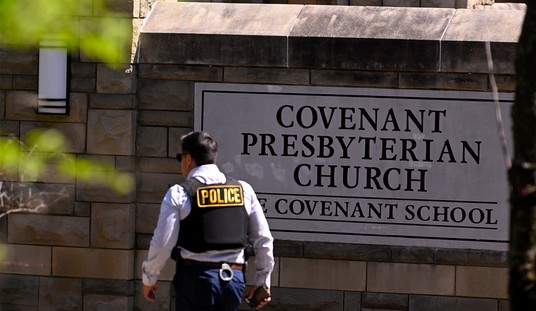On a snowy February day thirty years ago, Manhattan was rocked by an explosion in the public parking garage under the World Trade Center. A cell of Islamic extremist terrorists had parked a rented Ford Econoline van packed full of some 1,200 pounds of explosives there, hoping to topple the Twin Towers and kill Americans with the goal of pressuring the United States to rescind its support for Israel.
At 12:18 p.m. on February 26, 1993, the explosives were detonated via a fuse that gave the terrorist bombers time to make an escape. Even though the terrorists were unsuccessful in bringing down either of the Twin Towers that day, the explosion left a stories-deep crater beneath the World Trade Center, sent smoke pouring upward into the Twin Towers, and officially claimed six lives while injuring more than 1,000 as tens of thousands of people fought through smoke-filled stairwells to evacuate the World Trade Center.
30 years ago, #FDNY members battled fire in the unstable collapse area of the parking garage below 2 World Trade Center, while others climbed the tower, searching for and evacuating civilians. Six people were killed in the 1993 World Trade Center bombing, and over 1,000 injured. pic.twitter.com/2YdDI8DgP5
— FDNY (@FDNY) February 26, 2023
Even though the bombing caused power to be lost, World Trade Center personnel worked with the Port Authority and power company Con Edison to restore power to the Twin Towers on the evening of the attack.
"To have these towers sit dark against the skyline would have been just the wrong message," said the Port Authority’s World Trade Department director Charles Maikish following the bombing. "The one thing we did not want was for those two towers to stand dark on the skyline over New York on the twenty-sixth of February, nineteen ninety-three, and they didn’t."
Today, the foundations of the World Trade Center's Twin Towers are reflecting pools memorializing those killed in the 1993 bombing and in the terrorist attacks of September 11, 2001 some eight years later. On one panel of the National 9/11 Memorial, at the pool marking the spot where the north tower once stood, the names of the innocent lives taken in 1993 can be found inscribed.
Recommended
John DiGiovanni, 45, lived in Valley Stream on Long Island with his mother and was an East Coast sales manager for Kerr Chemicals. He was on his way to a sales call when he pulled into the World Trade Center parking garage.
Robert Kirkpatrick, 61, lived in Suffern, New York, with his wife Evelyn and was a senior structural maintenance supervisor for the Port Authority. He was taking his lunch break in the basement of the World Trade Center.
Stephen A. Knapp, 47, lived on Staten Island with his wife and two children and was the Port Authority's chief maintenance supervisor, working at the World Trade Center from the time it opened. He was taking his lunch break in the basement of the World Trade Center.
William Macko, 57, lived in Bayonne, New Jersey, with his wife Carol and was a Port Authority assistant chief mechanical supervisor for the World Trade Center. The former United States Marine was taking his lunch break in the basement of the World Trade Center.
Wilfredo Mercado, 37, lived in East New York, Brooklyn, with his wife Olga and two children and worked as a purchasing agent for the Windows on the World restaurant atop the north tower of the World Trade Center during the week and as a WTC security guard on the weekends. He was accepting a food delivery in the basement of the World Trade Center.
Monica Rodriguez Smith, 35, lived in Seaford on Long Island with her husband Edward and was seven months pregnant with her first child, a son set to be named after his father. Smith worked for the Port Authority as an administrator in the operations department and was in the basement of the World Trade Center on what was to be her last day at work before beginning maternity leave.
Thirty years after their lives were cut short by the radical Islamic terrorists, loved ones and New Yorkers are gathering at the site to hold a private ceremony of remembrance hosted by the 9/11 Memorial & Museum, followed by Mass at St. Peter's on Barclay Street.
On trial in 1998, bombing ring leader Ramzi Yousef told the court, "Yes, I am a terrorist and I am proud of it. And I support terrorism so long as it was against the United States government and against Israel." The judge sentenced him to life in prison plus 240 years — a number reached by adding together the estimated years of life stolen from those killed by the World Trade Center bombing. Yousef and five of his co-conspirators are still serving their sentences in U.S. prisons.
Though thirty years have passed since the bombing, the U.S. government considers the World Trade Center bombing to be an open case because Abdul Yasin, an alleged seventh co-conspirator in the terrorist attack, remains at-large after fleeing the U.S. just after the bombing in March 1993.
Never Forget.


